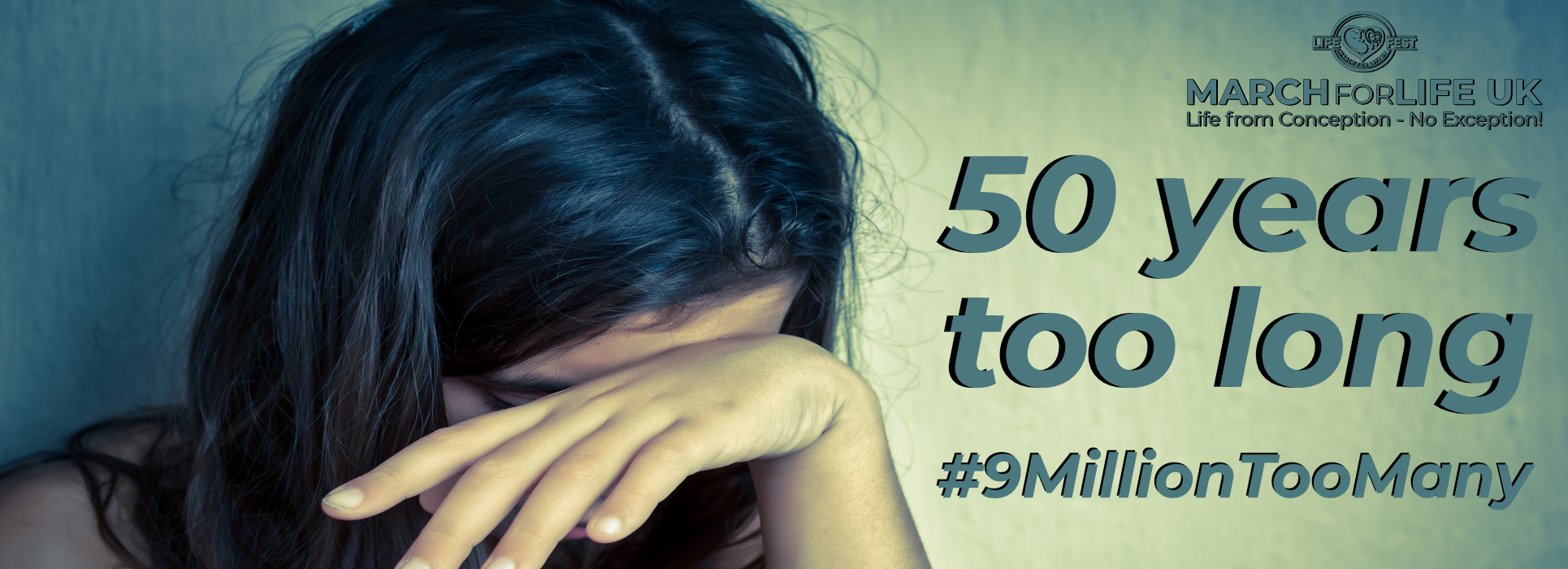
50 Years of Abortion in the UK
Fifty years ago, the Medical Termination of Pregnancy Bill [subsequently the Abortion Act 1967] passed its Second Reading in the House of Commons with a massive vote of 223 votes for and 29 against.
SPUC calculates that, so far, 8,624,567 innocent lives have been lost under the 1967 Abortion Act.
It’s instructive to consider the the pro-abortion lobby’s claims in 1966 in the second reading debate and during subsequent debates on this tragic legislation:
- “…it is not the intention of the promoters of the Bill to leave a wide open door for abortion on request.” (David Steel, Hansard 5th Series, Vol 732, col 1075, 22 July, 1966)
- “Nobody is advocating abortion on demand in this Committee or anywhere else…” (David Steel, Standing Committee F, 15 February 1967, col 250)
- “It is certainly not a general licence to a medical practitioner to carry out an abortion on anybody who desires it.” (Lord Silkin, sponsor of the Abortion Act 1967 in the House of Lords, Hansard, 19 July 1967, col 263)
What proved to be true was the following:
- As early as 1972, a report by the Royal College of Obstetricians and Gynaecologists (RCOG) stated: “…there is no such danger of injury [to the physical or mental health of the pregnant woman] in the vast majority of cases [of women seeking abortion], as the ‘indication’ is purely a social one.” (RCOG Report on Unplanned pregnancy. London, England: RCOG; 1972)
- And (Lord) David Steel himself, formerly David Steel MP, has, over the decades, openly promoted abortion on demand: “If it’s simply the decision of the mother then the limit should be 12 weeks” (BBC, 4 July 2004).
- He has also written: “Incidentally, I was misreported in one Sunday paper as advocating a lower limit for “social” abortions. There should be no such distinction – proper medical care takes all social considerations into account….” (The Guardian 6 July 2004).
- And, earlier this year, Lord Steel said regarding the state of the law in Northern Ireland that it was “simply ridiculous” and “absolutely extraordinary” that abortion is not widely available there.
Back-street abortion claims
The most widely promoted claim by the pro-abortion lobby in 1966, in Parliament and in the media, was that the Abortion Act was necessary to overcome back-street abortion and deaths associated with back-street abortion. The pro-abortion lobby’s estimates as to the number of back-street abortions rose to hundreds of thousands – but the evidence indicates a very different reality.
David Steel MP, the principal sponsor of the Abortion Act, claimed in the parliamentary debate:
“I would not settle for any definite figure, but it is probably somewhere between 40,000 and 200,000 a year.” (David Steel, Hansard 5th Series, Vol 732 col 1071 22 July 1966)
The truth was:
In 1966, the Council of the Royal College of Obstetricians and Gynaecologists (RCOG) showed that, in 1962, approximately 14,600 women in England and Wales had received hospital treatment for the consequences of criminal abortion. The RCOG Council commented: “It has been repeatedly stated that as many as 100,000 criminal abortions are induced in this country each year, and a more recent estimate is 250,000. These, and an earlier figure of 50,000, are without any secure factual foundation of which we are aware.” (Legalised Abortion: Report by the Council of the Royal College of Obstetricians and Gynaecologists”, British Medical Journal, 1966; 1: 850-854.)
In developed countries, the number of women dying from abortion started to fall significantly in the decades before abortion laws were liberalised. Numbers in England and Wales fell from 96 deaths in 1950 to 56 deaths in 1960, and to 32 deaths in 1970. (World Health Statistics Report, Vol.30, no.4, Geneva: World Health Organisation, 1977, p.322.; World Health Statistics Annual 1970, Geneva: WHO, 1973, vol.1, p.516.) (These figures include deaths from both legal and illegal abortions, as well as natural miscarriages.) Medical advances, such as the use of antibiotics, have been the most important factor in this trend.
After the British Abortion Act was implemented in 1968, the overall trend in the number of women dying from all causes in their main childbearing years continued the steady decrease already in evidence, apart from a slight increase in 1968 itself. (Report on Confidential Enquiries into Maternal Deaths in the United Kingdom 1985-1987, London: HMSO, 1991, p.6.) In other words, there was no sudden, marked decline in women’s deaths which could be attributed to the working of the Abortion Act.
The same pattern of exaggeration has characterised campaigns for legalised abortion all over the world. Former abortionist Dr Bernard Nathanson has admitted that he deceived people about the number of abortion deaths while campaigning for pro-abortion law in the United States. (Bernard N. Nathanson (with Richard N. Ostling), Aborting America, Garden City, New York: Doubleday, 1979, p.193.)
This write up is courtesy of LifeNews.com written with the help of SPUC. Note: John Smeaton is the director of the Society for the Protection of Unborn Children (SPUC), a leading pro-life group in the UK.
You are called to stand up for life! To respect and defend the mystery of life always and everywhere, including the lives of unborn babies, giving real help and encouragement to mothers in difficult situations. You are called to work and pray against abortion.
You are called to stand up for life! To respect and defend the mystery of life always and everywhere, including the lives of unborn babies, giving real help and encouragement to mothers in difficult situations. You are called to work and pray against abortion.